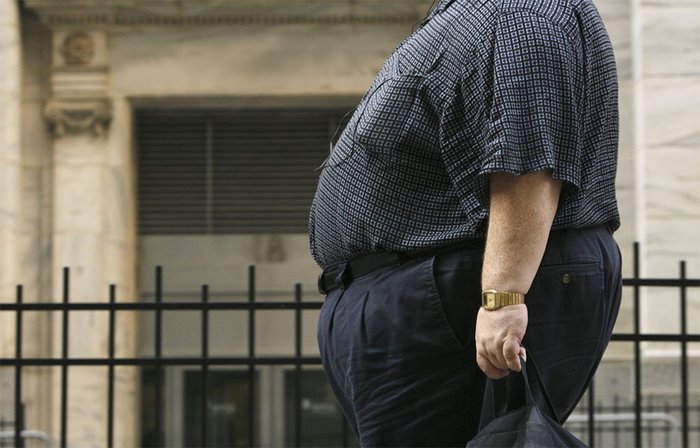For more than a decade, "The Biggest Loser" has been one of the most popular reality television shows, helping participants drop an astonishing amount of weight and drastically transforming their bodies, all in just a few months' time. However, some recent headlines attest that the show's method for weight loss isn't all it's cracked up to be. In fact, it often ends up doing more harm than good.
In case you missed it, here's a quick recap of the study, from the journal Obesity: A group of researchers followed 14 contestants from "The Biggest Loser" for six years following the end of the 30-week competition, tracking everything from changes in body weight, to hormone levels, to resting metabolic rate (RMR).[1] By the end of the competition, participants were burning 275 fewer calories each day than they should have been, based on their body composition and age. Six years later, that number had grown to 500 calories, despite an increase in activity level and substantial weight gain.
What does this mean? The subjects were primed for weight gain. Nearly all had gained back significant amounts of weight, and 5 out of the 14 participants were within 1 percent of their baseline weight or above.
These results are tragic, but in spite of the way news outlets portrayed them, they are not necessarily inevitable. You can lose significant amounts of weight safely, provided you do it systematically and following a few basic rules. The best part? You don't need to experience the deprivation and misery that are hallmarks of "The Biggest Loser" to experience real, sustainable weight loss.
Why Did The Contestants Gain Back So Much Weight?
It's the most pressing question, of course: How did this happen?
Rapid and extreme weight loss, such as that experienced by "The Biggest Loser" participants, drastically increases the likelihood of weight regain due to a phenomenon called "metabolic adaptation" or "adaptive thermogenesis." More casually, it's known as "metabolic damage." Essentially, your body responds to the extreme deprivation and stress by trying to hold on to fat stores, making it seem nearly impossible to keep the weight off long-term.

Losing a large amount of weight in a short amount of time can sabotage your metabolism, leading to rebound weight gain.
As of right now, we don't know exactly why this happens. The rate of weight loss, excessive exercise and calorie restriction, and the accompanying decrease in muscle mass all likely play a role. There are, however, ways to safely lose weight and prevent the worst of the damage. Follow these three rules, and it can even help restore metabolisms that have already been damaged by rapid weight loss.
1. Lose Weight Slowly
When it comes to lasting weight loss, patience is the ultimate virtue. This is a hard truth for many people to swallow, but it's essential to understand.
The ideal rate of weight loss on a weekly basis is roughly one percent of your body weight. For a 140-pound woman, this comes out to a loss of about 1.5 pounds per week. This may not sound like much, but if you lose weight too quickly, you run the risk of losing lean body mass—and that takes a lot of time and effort to regain.[2,3] In addition, aggressive weight loss is also associated with decreased athletic performance, meaning your workouts will become less effective.[4-7]
Researchers from Norway published a landmark study in 2011 which demonstrated the importance of losing weight slowly.[8] They split male and female athletes into two groups: One which lost weight at a fast rate, and the other at a slow rate. At the end of the study, both groups lost the same amount of body weight, about 9 pounds. However, it took the slower weight-loss group eight weeks to drop the weight, compared to five weeks for the faster weight-loss group.

Weight loss of 1-2 pounds per week is far more sustainable in the long run, and allows for the retention of valuable muscle.
But here's the real difference: The participants who lost weight at a slower rate lost significantly more fat mass than the people in the faster-weight-loss group. Additionally, the slower-weight-loss group gained significantly more muscle mass than the athletes in the faster-weight-loss group.
These findings clearly demonstrate the advantage of taking a slower approach to fat loss. Not only is it possible to drop more fat when adopting a slower rate of weight loss, but you can actually gain muscle during a period of reduced caloric intake!
2. Establish Your Calories At The Start
The calories you burn while exercising can lead to modest reductions in weight, but to experience the most noticeable changes to your physique, you'll have to cut back the calories you're eating to a certain degree. However, this works best if you know how much food you are currently consuming, what is known as "maintenance calories."
Don't worry, I'm not saying you need to haul around a food scale everywhere you go or weigh every piece of lettuce you eat. However, it's a good idea to have a general idea of how many calories you're eating each day, at least at first. I like to take it one step further with my clients and have them track their total calories as well as grams of carbohydrates, protein, and fat. Tools like MyFitnessPal, MyMacros+, or just paper and pen can help you track. Don't get hung up on the method—the simple act of recording your food intake is what's important.
If the idea of tracking seems overwhelming, start the process in baby steps. For example, start by tracking the calories and macronutrients in one meal—the most problematic one of your day. After you do this for a few days, start tracking a second meal or your snacks. Before long, you'll be tracking your macros for the entire day, you'll know portions by site, and you'll be equipped for success.
3. Customize Your Calories
Once you figure out your maintenance calories, the next step is determining how many calories you need to reduce to achieve that weekly weight loss of 1 percent. You've probably heard that in order to lose weight, you need to cut your food intake by 500 calories a day. The problem with using this number as your starting point is that it's not individualized to you and your body.

Every person has different caloric needs. Tailor your diet to your body and lifestyle, not someone else's.
Reducing daily calories by 500 may cause a 1 percent loss in one person, a 4 percent reduction in someone else, and no weight loss in yet another.
In my experience, a better starting point is to eat 20 percent fewer calories than your maintenance level. So if you currently consume 3,000 calories a day, you'll start your fat-loss plan by eliminating 600 calories per day from your diet. Likewise, if you're currently taking in 2,000 calories per day, a 20 percent reduction will put you in a 400-calorie deficit. This is why it's so important to know your starting numbers.
This 20 percent reduction is just your starting point, and it should be adjusted as needed. If you notice that your weight loss is occurring too quickly, add back a few calories until you're losing weight at a rate of one percent of your body weight per week. Conversely, if you're losing less than one percent per week, it's OK to reduce your calories a bit more.
Lose Weight Right, And Keep It Off
Once you've got your calories dialed in, it can be tempting to just keep cutting more and losing more. Resist the urge! Keep it slow and steady, and you'll look better after your diet, replace fat with muscle, and set yourself up for long-term success.
To learn more about weight loss, read the article "How to Lose Weight" and check out the fat-loss plans on Bodybuilding.com's Find a Plan page. A smart, sustainable diet and exercise plan may not provide a quick fix, but down the road, the results will be well worth it!
References
- Fothergill, E., Guo, J., Howard, L., Kerns, J. C., Knuth, N. D., Brychta, R., ... & Hall, K. D. (2016). Persistent metabolic adaptation 6 years after "The Biggest Loser" competition. Obesity. doi: 10.1002/oby.21538.
- Sénéchal, M., Arguin, H., Bouchard, D. R., Carpentier, A. C., Ardilouze, J. L., Dionne, I. J., & Brochu, M. (2012). Effects of rapid or slow weight loss on body composition and metabolic risk factors in obese postmenopausal women. A pilot study. Appetite, 58(3), 831-834.
- Sweeney, M. E., Hill, J. O., Heller, P. A., Baney, R., & DiGirolamo, M. (1993). Severe vs moderate energy restriction with and without exercise in the treatment of obesity: efficiency of weight loss. The American Journal of Clinical Nutrition, 57(2), 127-134.
- Eston, R. G., Shephard, S., Kreitzman, S., Coxon, A., Brodie, D. A., Lamb, K. L., & Baltzopoulos, V. (1992). Effect of very low calorie diet on body composition and exercise response in sedentary women. European Journal of Applied Physiology and Occupational Physiology, 65(5), 452-458.
- Bender, P. R., & Martin, B. J. (1986). Ventilatory and treadmill endurance during acute semistarvation.Journal of Applied Physiology, 60(6), 1823-1827.
- Horswill, C. A., Hickner, R. C., Scott, J. R., Costill, D. L., & Gould, D. (1990). Weight loss, dietary carbohydrate modifications, and high intensity, physical performance. Medicine and Science in Sports and Exercise, 22(4), 470-476.
- Friedlander, A. L., Braun, B., Pollack, M., MacDonald, J. R., Fulco, C. S., Muza, S. R., ... & Hoffman, A. R. (2005). Three weeks of caloric restriction alters protein metabolism in normal-weight, young men.American Journal of Physiology-Endocrinology and Metabolism, 289(3), E446-E455.
- Garthe, I., Raastad, T., Egil Refsnes, P., Koivisto, A., & Sundgot-Borgen, J. (2011). Effect of two different weight-loss rates on body composition and strength and power-related performance in elite athletes.International Journal of Sport Nutrition and Exercise Metabolism, 21(2), 97.



